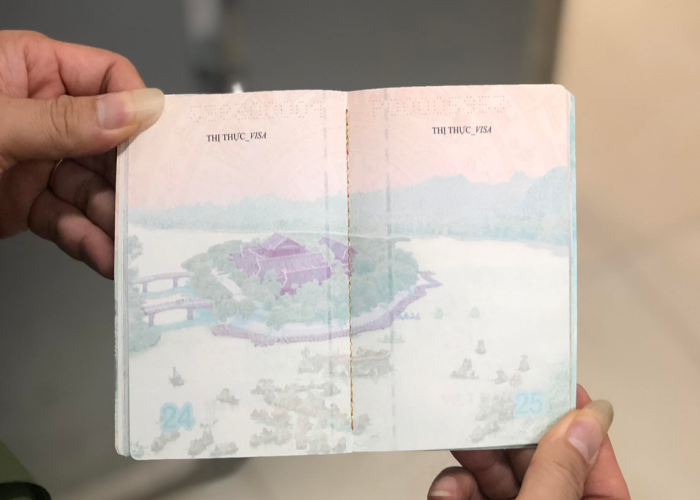
Landmark tourist destinations in new Vietnam passport form
Latest
 |
| Trang An Scenic Landscape Complex (Ninh Binh Province). (Photo: TITC) |
Trang An Scenic Landscape Complex (Ninh Binh Province)
Trang An, just 100 km from Hanoi, features lush green paddy fields, striking limestone outcrops and near-vertical limestone peaks. It’s home to 500 different species of flora and over 100 types of fauna too. It is alo the location in the film “Kong: Skull Island”. On 23rd June 2014, Trang An was inscribed in the UNESCO’s World Heritage List, proudly being the first site to be acknowledged as a mixed natural and cultural heritage in Vietnam.
Khue Van Cac (Ha Noi City)
Khue Van Cac (the pavilion of the constellation of literature) in Van Mieu - Quoc Tu Giam (the Temple of Literature ) is the symbol of Ha Noi City. It was erected in 1805 under the reign of the Nguyen dynasty as a place for classic poetry review.
Ha Long Bay (Quang Ninh Province)
Ha Long Bay with more than 1,900 virtual islands and islets, most of which are limestone. This exceptionally beautiful and appealing site was designated two times as World Heritage Site in 1994 for aesthetic value and 2000 by geological and geomorphological value.
Hue Imperial Citadel (Thua Thien Hue Province)
The complex of Hue Citadel relic is 520 hectares, located along the banks of the Perfume River, recognized by UNESCO as a World Cultural Heritage in 1993. Hue used to be the capital of Vietnam under the Nguyen Dynasty from 1805-1945. Up to now, a number of works and architectures inside are still preserved, imprinted with traces of time.
Hung Temple (Phu Tho Province)
The historical site is a complex of temples and pagodas, worshiping the Kings Hung and the royal family, located from the foot to the top of the 175 m high Nghia Linh Mountain, surrounded by a forest. This is also a familiar pilgrimage site for many Vietnamese people.
Hoi An Ancient Town (Quang Nam Province)
Hoi An attracts domestic and foreign tourists by keeping its nostalgic features with ancient houses, tiled roofs, painted in saffron color, next to Hoai River shimmering every night when people release lanterns together. Hoi An was recognized by UNESCO as a World Cultural Heritage in 1999.
Lung Cu Flag Tower (Ha Giang Province)
Lung Cu Flag Tower on the top of Nui Rong (the Dragon Mountain) is a sacred symbol of sovereignty in the northernmost point of Vietnam. The flag is 54m2 wide, representing 54 ethnic groups in Vietnam.
My Son Sanctuary (Quang Nam Province)
It is located in a valley with a diameter of about 2 km, surrounded by hills and mountains. This site has been recognized by UNESCO as a World Cultural Heritage since 1999. My Son is a Hindu holy place of Champa Kingdom. Today, visitors can come here for pilgrimage and visit the ancient architecture.
Fansipan (Lao Cai Province)
Fansipan Mount, known as the ‘Rooftop of Indochina’, is the highest peak in Vietnam and a great choice for your stargazing experience in Vietnam. It is also the destination of many mountaineers and cloud hunters. You could use Fansipan cable car to the top.
















